Garden Spring Cleaning
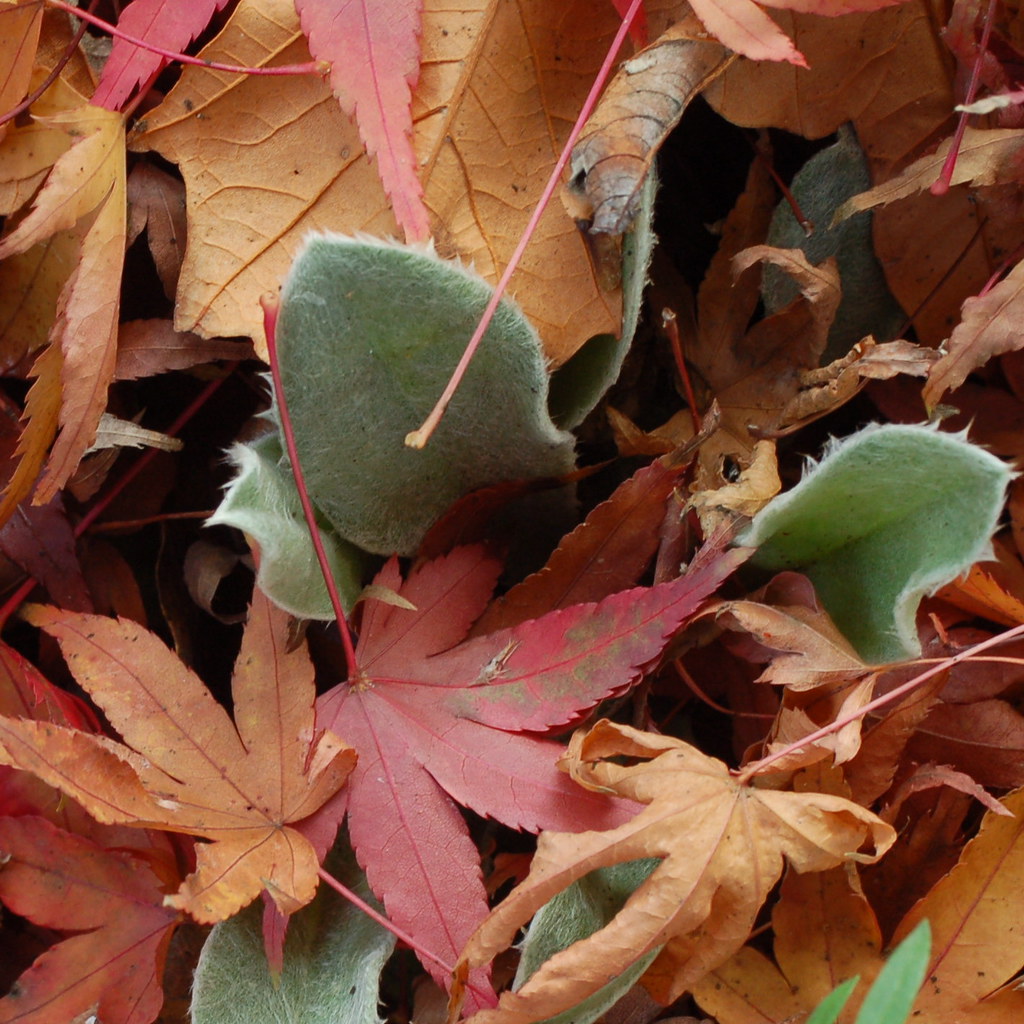
This morning, the temperature in Helena where we live, started at 24 F... brrr... but soon the sun was shining and I had the windows and back door open, airing out the house. So I meandered around in our garden, checking to see what survived winter and what's greening up already. I imagined the warmer days, brighter colors of May (Spring is cold and iffy and late and fickle in Montana.) and oiled my pruning shears. Next weekend I hope spring really is here to stay and I can get out in the garden to clean it up!
Spring beckons me out into the garden -- to clean up, tidy and fuss over the flower beds. The weather is still cool and as long as I'm in the sun it's pleasant -- not like the wilting heat of summer. I know alot of local folks are already pruning back the old growth from their perennials. I like to wait until the end of April to do that -- when I know for sure cutting won't harm the crowns of my just-sprouting perennials.
Here are some tips for spring cleanup:
- As you wander through your perennial beds, keep in mind that early spring soil, especially clay soils, are likely to be waterlogged, making the soil susceptible to compaction. Try to avoid walking in the plant beds as much as possible. Give the garden soil some time to dry out before you dig, or walk on your beds.
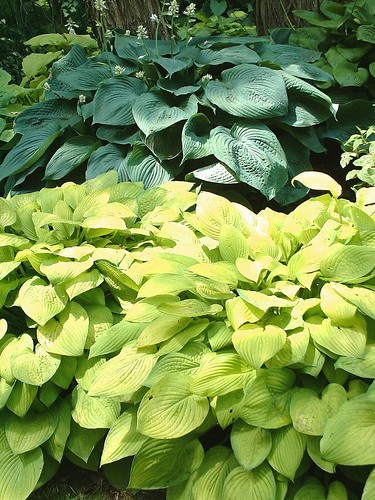 Avoid stepping on perennials that are still hidden under mulch and soil. In our garden, the hosta bed still looks totally bare today in early spring -- I wouldn't be able to see where my mature hostas are growing if it weren't for last year's wilted leaves. Hostas, Coreopsis and Blue Haze Euphorbia are such late-sprouting perennials that sometimes I wonder if they have even survived winter! These plants require patience -- I have to be careful not to dig around or step on my late-sprouters.
Avoid stepping on perennials that are still hidden under mulch and soil. In our garden, the hosta bed still looks totally bare today in early spring -- I wouldn't be able to see where my mature hostas are growing if it weren't for last year's wilted leaves. Hostas, Coreopsis and Blue Haze Euphorbia are such late-sprouting perennials that sometimes I wonder if they have even survived winter! These plants require patience -- I have to be careful not to dig around or step on my late-sprouters.So, how do you know which perennials to cut back? Follow these tips for the five main perennial types, when you're doing your spring clipping and pruning.
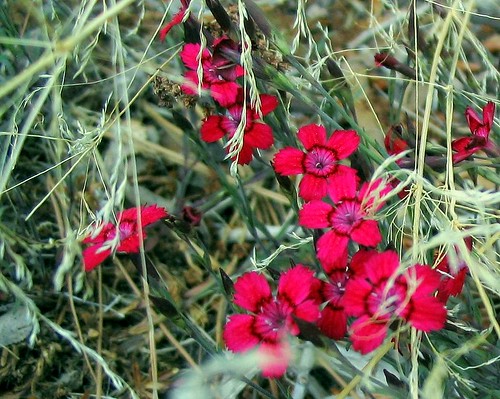 Evergreen perennials such as dianthus, moss phlox, basket of gold and creeping thyme. These plants only need a little tidying up. If they look healthy leave them alone. After the plants have bloomed (usually in spring) trim them back to about half their height to encourage more compact growth and occasionally a second bloom.
Evergreen perennials such as dianthus, moss phlox, basket of gold and creeping thyme. These plants only need a little tidying up. If they look healthy leave them alone. After the plants have bloomed (usually in spring) trim them back to about half their height to encourage more compact growth and occasionally a second bloom.Semi-evergreen perennials -- those that are evergreen only in mild winter climates. In Montana, the leaves on coralbells, bergenia, heucherella and tiarella are still there, but they look pretty mangy by April. Often these plants have basal rosettes of leaves and flowers on tall stems. In my garden echinacea, rudbeckia, spike speedwell and campanula have this growth habit.
Remove the beat up leaves from these perennials just to give them a neater look when the new gorgeous foliage starts to take off. I like to leave even the beat up leaves on the plant until I'm sure we're past the period of killing late frosts. I feel it just gives the plant a little extra insulation to have those leaves covering it's crown.
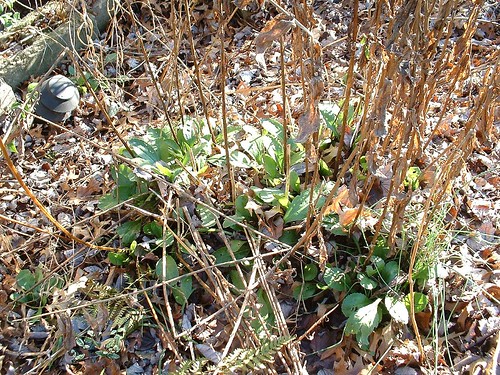 Some semi-evergreens like daisies (Leucanthemum, left) and coneflower, retain their basal rosette of leaves under the mulch and snow all winter, though in our growing zone, even these usually die back entirely. I like to leave the upright stems and seedheads on these plants -- they add winter interest provide seed for wintering songbirds. In mid to late-April, I cut back the dead stems and pull the mulch back a little from the crown so the sun can warm the rootzone. Generally I ignore the brown leaves at the base of the plants -- this saves me some work and the new growth will soon cover the old anyway.
Some semi-evergreens like daisies (Leucanthemum, left) and coneflower, retain their basal rosette of leaves under the mulch and snow all winter, though in our growing zone, even these usually die back entirely. I like to leave the upright stems and seedheads on these plants -- they add winter interest provide seed for wintering songbirds. In mid to late-April, I cut back the dead stems and pull the mulch back a little from the crown so the sun can warm the rootzone. Generally I ignore the brown leaves at the base of the plants -- this saves me some work and the new growth will soon cover the old anyway.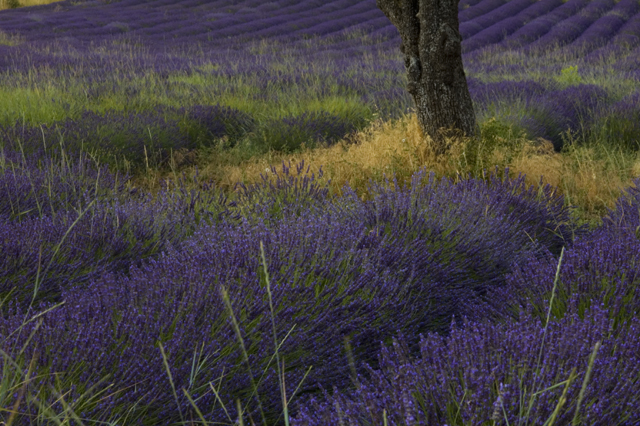 Leave woody perennials like lavender, russian sage and caryopteris alone until spring is really, truly, without-a-doubt, here to stay. I've lost some lavenders and silver mound artemesias in the past by being too eager to cut them back. I even leave the strangly looking russian sage stems on the plant until I'm absolutely sure there will be no more hard frosts.
Leave woody perennials like lavender, russian sage and caryopteris alone until spring is really, truly, without-a-doubt, here to stay. I've lost some lavenders and silver mound artemesias in the past by being too eager to cut them back. I even leave the strangly looking russian sage stems on the plant until I'm absolutely sure there will be no more hard frosts.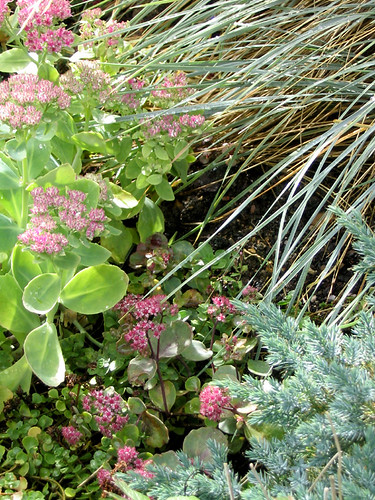 Ornamental grasses (like the Blue Oat Grass in the photo, left) usually go dormant in winter. I like to leave the blades and panicles on the plants through fall and winter -- their color is so beautiful with snow on the ground. In Spring, I get real satisfaction out of trimming back the golden brown leaves of all my ornamental grasses. It's like a major haircut! This is where you can go wild with your electric shears -- or something like the sheep-shearing blades I use. Trim the dead grass back to the so new green leaves will look totally fresh and graceful. Otherwise you'll have a heck of a time separating the dead stuff from the new leaves if you wait too long. Go for it now -- trimming grasses in early spring won't hurt 'em a bit.
Ornamental grasses (like the Blue Oat Grass in the photo, left) usually go dormant in winter. I like to leave the blades and panicles on the plants through fall and winter -- their color is so beautiful with snow on the ground. In Spring, I get real satisfaction out of trimming back the golden brown leaves of all my ornamental grasses. It's like a major haircut! This is where you can go wild with your electric shears -- or something like the sheep-shearing blades I use. Trim the dead grass back to the so new green leaves will look totally fresh and graceful. Otherwise you'll have a heck of a time separating the dead stuff from the new leaves if you wait too long. Go for it now -- trimming grasses in early spring won't hurt 'em a bit.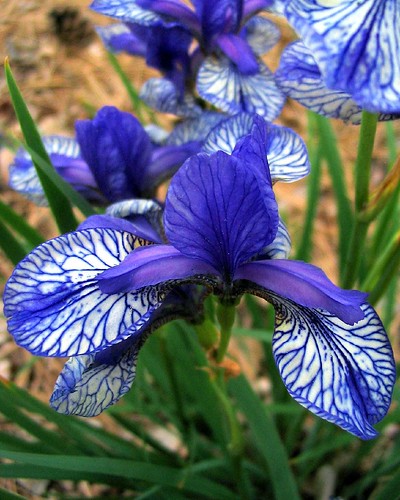 Most common perennials are truly herbaceous. These perennials die back to the ground -- basically they go 100% dormant. You won't see any green (or even burgundy) leaves on the plants in winter. Spring cleaning around this type of plant is a no-brainer. Just cut everything back to the ground. Your peonies, daylilies, hosta, ferns, delphiniums and polemonium will love you for it. Get the old stuff out of the way!
Most common perennials are truly herbaceous. These perennials die back to the ground -- basically they go 100% dormant. You won't see any green (or even burgundy) leaves on the plants in winter. Spring cleaning around this type of plant is a no-brainer. Just cut everything back to the ground. Your peonies, daylilies, hosta, ferns, delphiniums and polemonium will love you for it. Get the old stuff out of the way!If you don't have problems with mildew or other plant diseases in your garden, go ahead and compost the trimmings. Make sure you toss the seedheads into the trash bin and not into the compost pile, to avoid spreading seeds that might volunteer to take over your garden this year.
Enough for one weekend! I'll write about Composting and Weeding in my next posts of this series. After that I'll share my opinions on mulching, edging and otherwise nourishing your spring garden. For now, happy gardening!
Photos used in this article are courtesy of Doug Felt, Henryr10 and Siddharta on Flickr. The rest of the photos are mine. If you click on each photo, it should take you to the photographer's flickr page. Thank you to all, for your permission to use your garden photos in my post.
Please remember all photos on Raven's Nest are copyrighted by the original photographer. All photos by Native Design and MontanRaven are copyright by Maureen Shaughnessy


















0 Comments:
Post a Comment